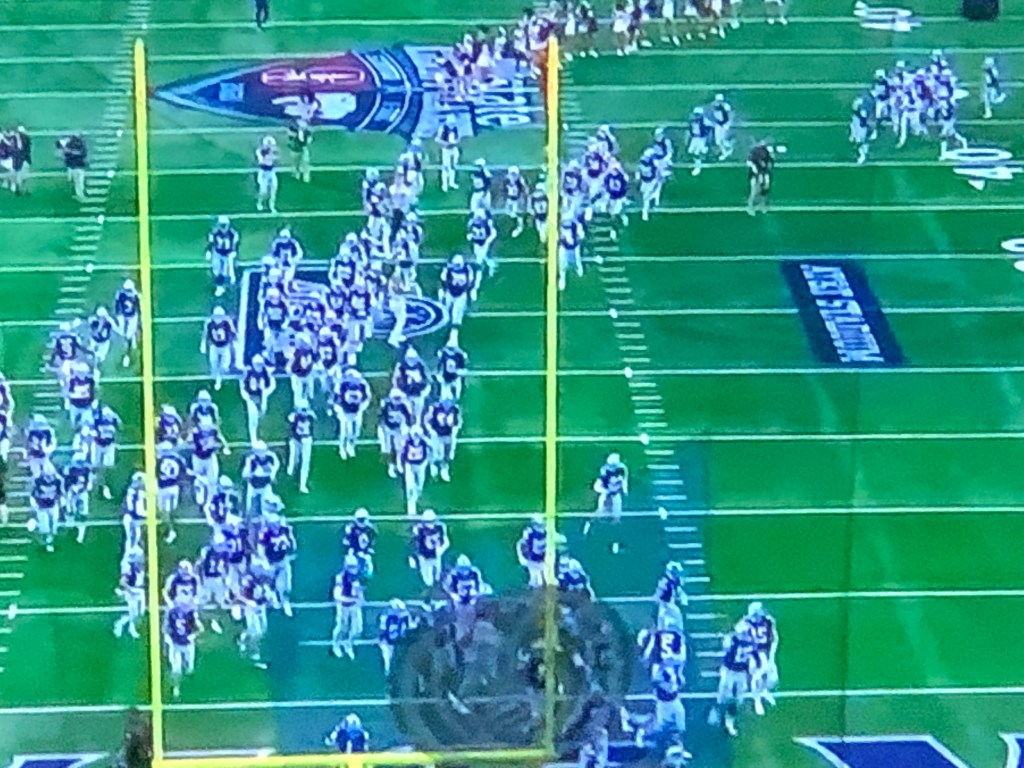September 04, 2021

The Kansas State Wildcats kicked off their football season today with a home game hosting the Stanford Cardinal. Well, sort of a home game. The Cats chose to open at a neutral location in Dallas’ AT&T stadium. The Cats were originally scheduled to host Stanford this year at Bill Snyder Family Stadium, but athletics director Gene Taylor decided to move the game to the home of the Dallas Cowboys in exchange for $2.8 million. The Cardinal only played six games last year and went 4-2 but ended the season winning their last four. The Cats went 4-6 but ended losing the last five. The game will be treated as a K-State home game and the Cats will have a significant fan advantage as the Cardinal travels from the West Coast. The Cats were a 3-point favorite, but won 24-7.
The Cats’ mascot (Willie the Wildcat) is patterned after the bobcat (Lynx rufus), also known as the red lynx. This is a medium-sized cat native to North America, and ranges from southern Canada through most of the contiguous US to Oaxaca in Mexico. This wide range and large population place it as Least Concern on the IUCN Red List since 2002. It has been hunted extensively for both sport and fur, but populations have remained stable even if declining in some areas. The term bobcat comes from a stubby (“bobbed”) black-tipped tail. A wildcat is a species complex comprising two small wild cat species, the European wildcat (Felis silvestris) and the African wildcat (Felis lybica). The European wildcat inhabits forests in Europe and the Caucasus, while the African wildcat inhabits semi-arid landscapes and steppes in Africa, the Arabian Peninsula, Central Asia, into western India and western China. Neither is found in America, but their similar size and appearance led to the American species being mistakenly called a wildcat.
Stories featuring these cats are found in Indigenous cultures of North America and have parallels in South America. One story of the Nez Perce depicts the bobcat and coyote as opposed, antithetical beings, while another version represents them as equal and identical. In a Shawnee tale, the bobcat is outwitted by a rabbit, which gives rise to its spots. After trapping the rabbit in a tree, the bobcat is persuaded to build a fire, only to have the embers scattered on its fur, leaving it singed with dark brown spots. The Mohave believed dreaming habitually of beings or objects would afford you their traits as supernatural powers. When you dreamed of two deities, the cougar and lynx, the belief was it would grant the superior hunting skills of other Tribes. European-descended inhabitants of the Americas also admired the cats for their ferocity and grace. It is this ferocity that earned Willie the title of mascot.
Thoughts: Anthropologist Claude Lévi-Strauss argued the opposing depictions of the cats in Nez Perce stories are a later adaptation resulting from regular contact between Europeans and native cultures. The concept of twins representing opposites is an inherent theme in New World mythologies, but that they are not equally balanced figures. The animals represent an open-ended dualism rather than the symmetric duality of Old World mythologies. The earlier version of the Nez Perce story is of much greater complexity, while the version of equality seems to have lost the tale’s original meaning. It seems when different cultures meet and interact, crossover of ideas can go both ways. Europeans embraced bobcats into their tales and Indigenous altered the story to reflect world changes. Adjusting to a new reality does not have to be one sided. Do the work. Change is coming and it starts with you.